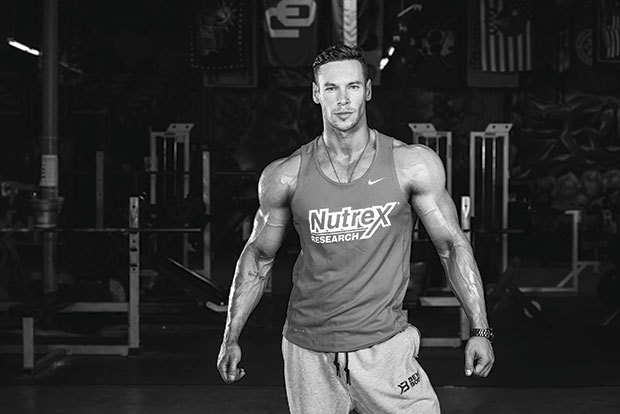


Shoulders are tricky. One of the most complex and fragile joints in the body, the shoulders are commonly misunderstood and overused all at the same time. Too often, shoulder training revolves around too much volume within a narrow plane of movement. Machine press. Military press. Arnold press. Barbell shrug. This type of repetitive behavior not only leads to injury but to unexcited deltoids that refuse to grow.
“Most of the time, guys like to use shoulder machines, which is nullifying to the nervous system. And as a bodybuilder and hypertrophy athlete, you don’t want your nervous system to be dumb; you want to get as many motor units on the job during those movements,” says strength coach and kinesiologist Brian Richardson, MS, CPL2, NASM-PES, the co-owner of Dynamic Fitness in Temecula, California, where he works with a wide spectrum of amateur and professional athletes. “People get into a workout that is comfortable and they end up doing the same routine. However, throwing a curveball is great for the physique.”
The curveball Richardson refers to is actually a whole inning of curveballs. For one, he mixes up tried-and-true mass-building exercises like the standing military press with moves that place more complicated demands on the shoulder. For instance, the reciprocity shrug is a bilateral exercise in which each side is moving through a different plane. It involves the deltoids as well as the rotator cuff, the postural muscles, and several core muscles with serious aesthetic currency, such as the obliques, intercostals, and serratus.
The workout is organized so that the exercises with the greatest neurological load are performed first, when the central nervous system is still fresh. Using this logic, complex barbell exercises are tackled early in the workout, while fixed-path exercises are performed near the end.
“You can do a seated machine press with a beer in one hand and pressing the stack with the other,” Richardson points out.
The rep ranges vary widely in this workout. While many people adhere to long-held beliefs in strict rep-range paradigms (two to six reps for strength, eight to 12 reps for hypertrophy, 15 to 20 reps for muscular endurance, etc.), Richardson does not. He cites several clients who have added quality size surprisingly quickly through using high reps. There is so much biological overlap between the energy systems, he says, that you only stand to gain from dipping into the lower and higher end of the rep-range pool.
The cherry on top of this workout is the circuit-style tri-set finisher. The three relatively simple exercises are performed with light weight but no rest. The accumulation of time under tension calls upon types of muscle fibers you didn’t know you had.
“The guy doing the traditional workout is taking long rests between sets. This tri-set adds a more metabolic angle. When you ventilate harder, you are going to produce more lactic acid and you are going to recruit more muscle,” Richardson says. “The higher pace gives you a bigger bang for the buck and it doesn’t take as long. It’s a great way to get a pump in a short amount of time.” IM
Go to our YouTube channel to see behind-the-scenes and exercise demonstrations:






















You must be logged in to post a comment Login